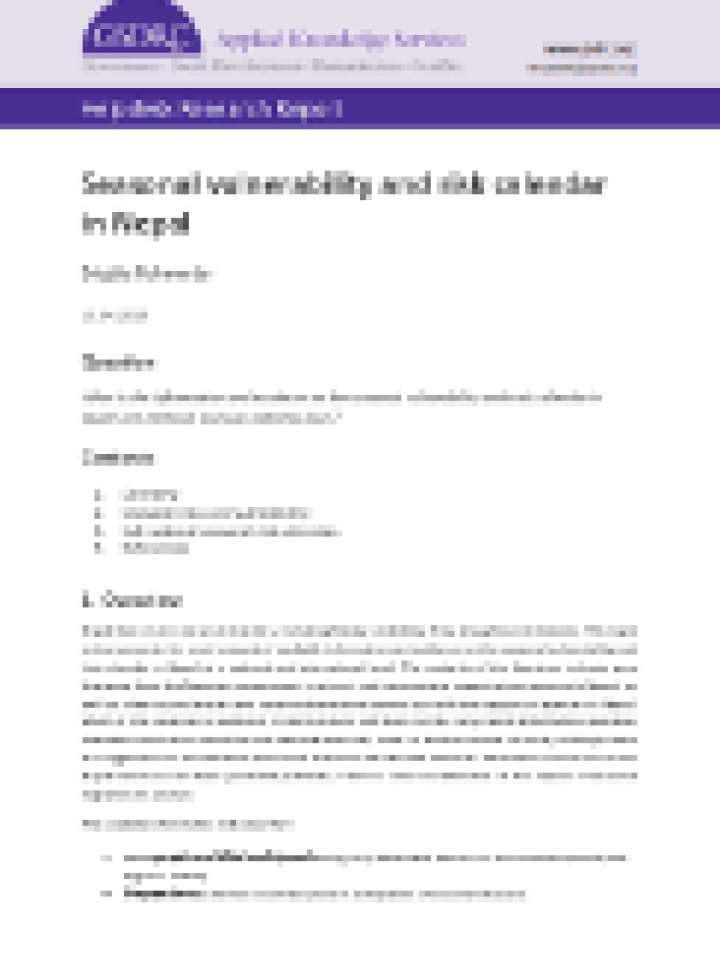Seasonal vulnerability and risk calendar in Nepal
This paper addresses the information and evidence on the seasonal vulnerability and risk calendar in Nepal at a national and sub-national level, including: floods, landslides, fires, droughts and diseases. Findings of this rapid review indicates that:
- Most people are killed and injured during July-September which is in the monsoon period.
- Preparedness activities could take place in anticipation of seasonal disasters.
- The monsoon season (June-September) often experiences landslides, flooding, thunderstorms, disease (cholera, gastroenteritis, diarrhoea, encephalitis, meningitis, typhoid, jaundice, malaria, Japanese encephalitis) and drought (when the monsoon rains fail).
- The dry season (March-June) often experiences household and wildfires, drought, heatwaves, and windstorms.
- The winter season (November-February) often experiences avalanches, avian influenza, and crop damage.
- Nepal is very vulnerable to climate change which is expected to lead to more extreme weather and changing seasons.
- Summer cropping season (June-September) involves rice, maize and millet, while the winter cropping season (October-May) involves wheat, barley and potatoes.
- Seasonal food shortages are quite common in many parts of Nepal. July-August and January-March are traditionally agricultural lean seasons, leading to increased risks of food insecurity.
- Water-borne diseases are common between June-August. Water sources may be seasonal.
- Seasonal migration is related to the agricultural cycle, with young men leaving to find work, leaving those behind more vulnerable to disasters.
Explore further
